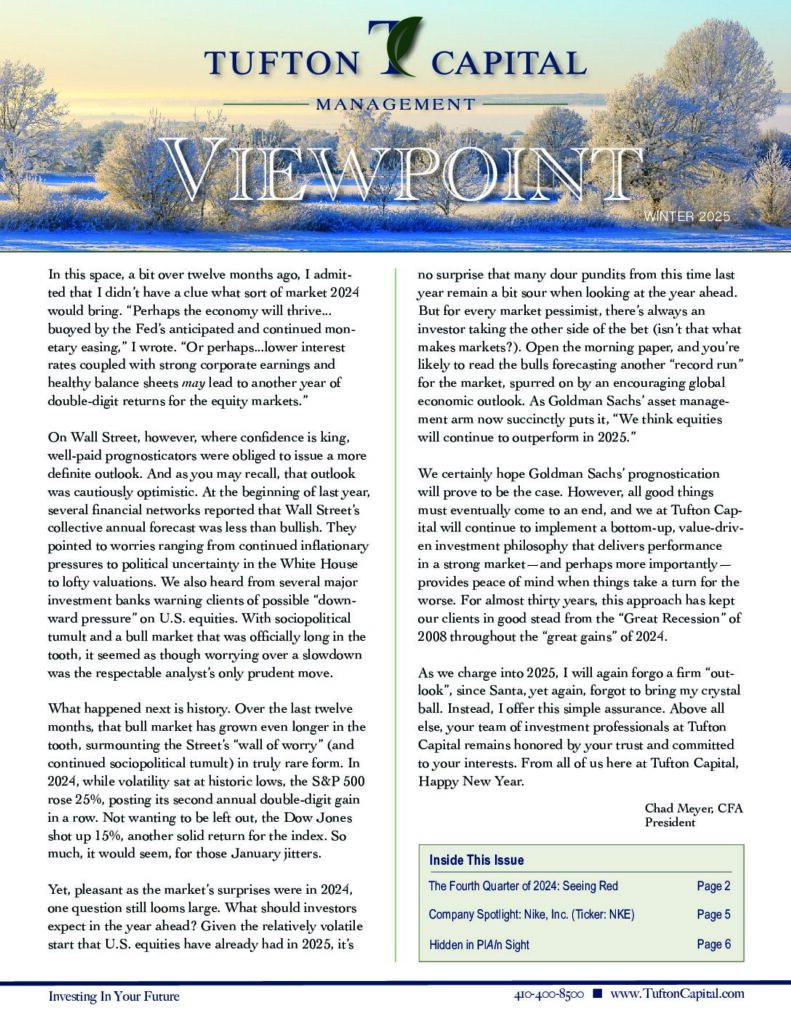This week was again a good one for stocks, with the Dow up .51% and the S&P up .95%. Meanwhile, the Nasdaq soared, up 2.77% for the week, helped along by positive earnings from Google (a personal favorite of this blog’s author) and Intel. In Ben Bernanke’s speech Friday morning, he made it clear that the Fed would stand ready to take further steps to help bolster the economy. However, the markets seemed largely to ignore his comments.
The recession ended June 30, 2009. There are some “talking heads” that say it’s been too long since then for unemployment still to be this high. They point to this fact as reason to fear further economic troubles. However, we can see by looking at some historical data (chart below) that there is no real “normal” amount of time that elapses before peak unemployment is reached. Since World War II, it has taken anywhere from 0 to 574 days to reach the unemployment peak after a recession. The average is 188 days, and our most recent recession gave us unemployment that peaked after 183 days. We say there is really nothing here to worry about yet. (more…)
 The third quarter of 2010 was a remarkable one for stocks and bonds. As is rarely the case, both performed exceptionally well. We do not anticipate this unusual trend will continue much longer. It is, however, very nice to have both major components of our clients’ portfolios performing so well at the same time.
The third quarter of 2010 was a remarkable one for stocks and bonds. As is rarely the case, both performed exceptionally well. We do not anticipate this unusual trend will continue much longer. It is, however, very nice to have both major components of our clients’ portfolios performing so well at the same time.
A major reason for the strong quarter in stocks was the shift in the consensus view of the economy. In the beginning of the quarter, most pundits (not us, I might add) were calling for a “double-dip” recession. This was a step backwards for the market. By the end of August, that view began to shift towards our belief that the economy would avoid another recession. Clearly, two steps forward. Sentiment shifted because the economic data overall began to turn slightly more positive. With this shift in sentiment, the market rallied. By the end of the quarter, the Dow Jones Industrial Average was almost back to 11,000. (more…)
One, two, three, four…
Hrmm!
One, two, (one, two, three, four!)
1966… The Beatles—most of my partners are way too young to remember the phenomenon they were, and the others were on to more serious things. For those of you of a certain age though, do you remember the song to which that count was the opening?
Let me tell you how it will be;
There’s one for you, nineteen for me.
‘Cause I’m the taxman,
Yeah, I’m the taxman. (more…)
Markets were up this week, with the Dow finishing up 1.62%, the S&P up 1.64%, and the Nasdaq up 1.31%. Stocks were helped along Friday by jobs- while we lost some 90,000 in total, most of the loss was from public sector jobs. The private sector actually added some 60,000, showing continued confidence in the economy.
Investors might be noticing the changing currency climate, wherein many currencies are gaining value against the dollar. If this is an “unfair” valuation (as the dollar should continue in its strength), they might be wondering about an investment in the dollar. Investing in a foreign stock with some exposure to U.S. sales is in itself a bet on the dollar- without engaging in tricky currency trades.
Next week, companies’ quarterly earnings start in earnest. Also notably, the CPI numbers come out next week. (more…)
The markets had a very strong week, with the Dow ending up 2.37%, the S&P up 2.04%, and the Nasdaq 2.83%. Investors were able to look past weaker-than-expected numbers in new homes sales and durable goods orders.
Bond prices continue to rise while yields (necessarily) fall. Our investment meeting today again underlined our conviction: bonds are in a bubble. We stress that investors should be exceedingly cautious in the bond market— and may want to avoid it altogether.
This week’s factoid: The mortgage crises have gone so far that Bank of America evidently has decided it can foreclose on any home, even those that do not have mortgages. BofA has foreclosed on and remanded the title of a house for which the owners paid cash seven months ago. Thankfully, BofA recognized the error and is correcting it “at [its] own expense.”
The markets had strong gains this week, the Dow ended up 2.9%, the S&P up 3.8%, and the Nasdaq 3.7%. Stocks were boosted Wednesday by good news from Australian and Chinese markets and a positive ISM report. On Friday stocks also gained ground, bolstered by the bureau of Labor Statistics’ jobs report, which showed better-than-expected employment numbers. The report showed that while it may be true that the economy slowed a bit, it is at least not collapsing.
This week’s factoid: The World Meteorological Organization recycles their storm names every seven years, until such time that a hurricane gains enough notoriety that its name is “retired.” Thus, the storm currently threatening Labor Day plans is actually Earl IV.
Despite an attempted Friday rally, the markets had another down week, but the Dow did managed to finish the week above the (psychologically) important 10,000. The Dow ended down .62%, the S&P was down .68%, and technology suffered the most, with the Nasdaq down 1.19%.
Weak housing and jobs numbers made investors skittish over the strength and timing of the recovery. Companies’ results are still looking strong, though, so we consider the markets now considerably undervalued.
The markets had a mixed week. The Dow was down .87% and the S&P lost .7%, while the Nasdaq ended up .28%. Economic data continues to chill investors. The recovery is not coming along as speedily as we all had hoped.
There has been a tremendous amount of money that continues to flow into the bond market. Instead of looking at yield to maturity, many investors instead are looking at their current yield. This sentiment, along with the fear of equities, has pushed bond prices ever higher. It has all the trappings of a bubble.
This week’s factoid: The money sapped from Mexico’s economy from illegal drug trade amounts to 1% of its GDP. President Calderon’s proposal to legalize marijuana is, in part, an attempt to regain some of that cost.
Stocks suffered this week, with the Dow ending down 3.29%, the S&P 3.77% and the Nasdaq 5.01%. Among many factors bringing down the markets this week was an unexpected rise in weekly jobless claims. Also, Cisco had earnings that beat consensus numbers, but were weaker than the all-important “whisper numbers,” casting further doubt on a smooth recovery. Much of the week’s losses can be attributed to this fear of a continued rocky recovery. Volume was light this week, however, so whoever did bring the volume was in the mood for selling.
Master limited partnerships have been getting attention recently. An MLP has the tax benefits of a limited partnership with the liquidity of a publicly traded company. An MLP pays out nearly all of is profits to shareholders. The arrangement creates a tax headache, as our clients have reminded us, but we maintain that the yields from an MLP can be more than worth it.
Next week, we look for weekly claims (as always), housing starts, and manufacturing and industrial production numbers to dictate trading. (more…)
The modest gains of this week were erased- and then some- by Friday’s loss. The Dow ended the week down .98%, the S&P -1.2%, and the Nasdaq -.79%. A good jobs report Thursday and stellar earnings from Intel were evidently not enough to bolster confidence. Google’s earnings late Thursday failed to meet bottom-line estimates, while a few financials saw weaker earnings.
Despite the bad news in a few areas, we still feel the recovery is underway. A majority of the leading economic indicators have turned up toward non-recessionary levels. We remain confident in our economy’s growth.
Next week we’ll see more earnings pour in. Hopefully, a majority of good reports will turn this market around.
This week’s factoid: The fact that the Richter scale for earthquakes is logarithmic means that today’s 3.6 magnitude earthquake was more than ten thousand times less powerful than the February 27 earthquake that shook Chile and prompted tsunami warnings.
The markets had a big week, with the Dow trumpeting past 10,000 to finish the week up5.28% at 10,197. The S&P gained 5.41% and the Nasdaq 5%. Markets looked favorably on both earnings and jobs reports. First-time initial jobless claims dropped by a better-than-expected 21,000. Gold suffered from the optimism in the markets, dipping below $1200 on Thursday, but regained some ground Friday.
We are on the record calling for no double-dip recession. The jobs data and positive earnings reports strengthen our position. The valuations of equities remain extremely low. Also, the IMF revised upward it world growth estimate for the year this week. We believe these data serve as a reminder that the recovery is continuing.
Next week, all the focus will be on earnings. Other economic news will take a back seat to the outlook given in next week’s announcements. We look for strong earnings to come through.
This week’s factoid: BP predicts it may be able to contain all of the flow from its broken well in the next four days.
Bonus factoid: In 1943, Thomas Watson, chairman of IBM, predicted that there would be a “world market for maybe five computers.”
The second quarter was punctuated by two major crises: the European financial crisis and the BP oil disaster. Both dramatically affected the market and both arguably had very little impact on our economy. When we look beyond these two headline-grabbing events, we see a continuation of the economic recovery. This market downturn should prove to be a buying opportunity. (more…)
Investment Income—The Growing Problem
 With bond and money market yields near all-time lows, investors who are trying to generate income feel like they are swimming upstream. Until recently, investors could always count on the bond market to provide them with a steady stream of consistent income. Yields were reasonably competitive, which made it easier for investors to live off of their investment income. The U. S. financial crisis and subsequent recession pushed interest rates to historically low levels.
With bond and money market yields near all-time lows, investors who are trying to generate income feel like they are swimming upstream. Until recently, investors could always count on the bond market to provide them with a steady stream of consistent income. Yields were reasonably competitive, which made it easier for investors to live off of their investment income. The U. S. financial crisis and subsequent recession pushed interest rates to historically low levels.
During this difficult period, however, investors could still manage to find competitive yields, as risk was still rampant. For example, there was a period of time in late 2008 and early 2009 when the consensus view was that municipalities would default on their obligations. Yields spiked to very attractive levels as hedge funds dumped their municipal bonds. Also, corporate bonds maintained high yields throughout the crisis as they were considered very risky. The spread between corporate yields and Treasury yields reached an all-time high.
With the economic recovery, the perceived risk of both corporate and municipal bonds has fallen dramatically. Thus, their yields are now in line with historical levels versus Treasury yields. For the first time in 50 years, many companies’ bonds are yielding less than their common stock. With bond yields at record lows and money market rates near zero, investors are facing the unappealing proposition of replacing their maturing 5% coupon bonds with new bonds yielding 3% or less.
Simply put, after years of growing income streams, investors’ income generated by bonds and money market funds is being systematically reduced. But what can investors do to fix this problem? The answer may lie in the equity market. Diversified stock portfolios can be constructed with yields in excess of 4%. Because of the recent correction combined with companies’ willingness to increase dividends, stock yields have increased. We are not proponents of making a huge asset allocation shift, but are in favor of shifting some money from bonds to high yielding stocks to increase the portfolio’s income. Taking this action may allow investors to swim with the income current instead of against it.
—Dave Stepherson
The major markets continued in their volatility this week, this time swinging down: the Dow finished the week down 2.94%, the S&P 3.64%, and the Nasdaq 3.74%. The slide was despite a better-than-expected jobs report and durable-goods orders. As noted earlier, volatility is unnerving, but we still think the economy should continue pushing upward.
The European debt crisis continues to be the buzz in the media. After some analysis, we believe that, discounting currency changes, a slowdown in European growth might not be all that terrible for the U.S. economy. Look for a more thorough report on the subject from us in the coming two weeks or so.
This week’s factoid: The Center for Economics and Business Research (CEBR) in London estimates that $4.8 billion in productivity is lost worldwide due to the World Cup.
Last week provided a nice set of gains, with the Dow up 2.81%, the S&P up 2.50%, and the Nasdaq trailing, but still up at 1.10%.
We’ve gotten some interesting new insight into the popular BABs (Build America Bonds). BABs are part of the American Recovery and Reinvestment Act, which was signed into law on February 17, 2009. In short, BABs look attractive because the Federal government picks up the tab for the tax on such bonds- so municipalities are able to offer bonds that compete with corporate issues. This sounds like a great arrangement for investors. And it can be- if everything works as planned. However, if the municipality goes into default, the federal government holds back the portion of the interest on the bonds for which it is responsible. BABs, then, are not as great as some would believe.




